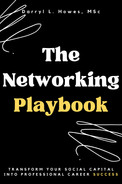Moving Around a Room (The Dunbar’s Number Play)
Of course, the context will vary, but a good many networking events take place in traditional meeting room venues. For this reason, it’s useful to look at this setting and how to manage our behavior within it.
As we enter the room we may be met with a range of sensations. Bright lights, background muzak, aromas from the catering station, or the clink of coffee cups or glasses.
Sometimes, this can feel a little overpowering. It’s important therefore to take a few moments to settle in and find our feet.
One excellent tip is to head to the drinks station. This has two benefits; a chance to survey the scene and secondly, being in a queue for refreshment is often an opportunity to strike up an impromptu conversation. This gives us a ready-made chance to flex our vocal cords and try out our small talk repertoire.
In the early stages of a social gathering, people tend not to form large conversational groups. Things haven’t quite warmed up enough at this stage (unless of course, they already know each other).
The effect of this is that, by arriving early, the challenges of joining a preexisting group don’t arise.
For this reason, many networking commentators recommend early arrival. This provides an opportunity to have one-on-one conversations as other guests arrive after and join us, rather than we join them.
Approaching Groups
But even arriving early won’t inoculate us from the need at some point to approach a group of people who are having a conversation together.
Let’s consider the following four groupings, both in terms of numbers and the respective positions of those conversing.

Conversational groupings
Image © Strategic Business Networking Ltd 2021. All rights reserved.
There’s lots of networking advice, which asks us to consider whether conversational groups are “open” (available to approach) or “closed” (difficult to approach and break into).
The advice might be “Don’t approach Group 1 (closed) but go ahead with Group 3 (open).”
Even if we don’t consider ourselves skilled social observers, it is fairly easy for us to spot when people are engrossed in an animated conversation or perhaps are old friends who want to catch up personally, to the temporary exclusion of others. Group 2 might be an example of this.
Social science would again suggest that context is all important. Some very formal events (black tie perhaps) might set a social code where we certainly would not impose ourselves on Group 1. Or at least not until it looked like it was fragmenting, or it was obvious the conversation has reached a hiatus.
Alternatively, there are other more relaxed social contexts (an office BBQ?) where it would be perfectly acceptable to “break in” to Group 1.
The other key factor is politeness. It may seem obvious but cutting in and overpowering a conversation will not win many supporters. A simple ‘May I join you?’ is enough to persuade most groups that we are worthy of being allowed in.
It’s also worth mentioning the advice of Professor Dunbar, who states:
“The upper limit on the number of people who can maintain a functional conversation is just four; add an extra person and I can guarantee that within 30 seconds, it will be two separate conversations.”
So, we may need to bear in mind that a group of six people is not a conversation between six, but most likely two (or more?) separate conversations.
Approaching conversational groups is really a matter of being polite and relying on our judgment of the situation. There’s no guarantee that Group 3 will be easier to approach than Group 4 (or vice versa). It depends.
The Restorative Niche
This term is a favorite of Professor Brian Little of the University of Cambridge. An expert in personality, his TED Talk is highly recommended.
Professor Little’s coining of the phrase refers to the practice of finding a haven of quiet and solitude to recharge our batteries.
In a networking context, it could mean taking a quick five-minute time out. This provides an opportunity to assess results so far and think about the achievement of our networking goals, flexing or revising our plans as necessary.
Again, this plays to personality traits of extraversion and introversion. The biological theory for these types of behavior (see Eysenck 1947) rests upon stimulus of the brain.
As Eysenckian theory goes, the brains of extraverts are understimulated. They, therefore, take up opportunities to seek out stimulation to restore an equilibrium. This may account for extreme extrovert behavior that is often described as thrill-seeking.
Conversely, according to theory, the brains of introverts are overstimulated. This means they seek out opportunities to dampen down this over stimulus.
Introverted behavior might then be evidenced by removal from the situation, such as someone seeking refuge in a good book. But this wouldn’t do at a normal networking event!
Professor Little’s own recommendation? This involves finding the monastic sanctuary of a WC cubicle!
Stay Late (The Stay Late Play)
Accepting constraints of time and energy, staying until the end of an event can pay dividends.
Remembering “primacy and recency” and good early impressions, we have an equally good opportunity to make a lasting impression as the event draws to a close.
It’s often said that some of the best conversations strike up as people are leaving. At this point, we’ll find that groups have formed where people feel comfortable with each other.
This informality spills over into freedom of speech and more relaxed conversation. Our messages around who we are and what we do start to sink in.
In this fertile ground, people have more time to think about the implications of what they are hearing. When social barriers are lowered in this way, opportunities often appear.
So, notwithstanding the restrictions of the next meeting in the daily diary or the final train home, we should consider staying as long as we can.
But … (The Don’t Stay Too Late Play)
There’s a slight risk in staying on late at an event.
We might stop the organizers from being free to have their preagreed postevent debrief. They don’t want to discuss such things within our earshot. Also, they won’t thank us for getting in their way and preventing them from returning home to friends and family.
The solution? If we do decide to stay on (and this is a judgment call like any other), let’s keep our eyes and ears open.
If we should feel that we are overstaying our welcome, let’s just say our thankyous and goodbyes as quickly as possible and then exit.
With any luck, the event organizers will realize what a savvy, self-knowledgeable lot we are. Who knows, we may even get a special invite to their next event?
Strategic Business Networking - further explained:
In 2015, a Harvard Business Review article was published with the heading “99% of Networking Is a Waste of Time.” This slightly provocative headline led to many other news media commentaries following like a comet trail in its wake.
During his visit to the World Economic Forum in Davos, Switzerland, networking supremo Rich Stromback (known as “Mr. Davos”) remarked that our labored attempts to connect with our fellow men and women at countless venues and events throughout the land are, mostly, all for naught.
But what Rich Stromback said deserves closer analysis.
In fact, while he recognized the value of high-profile Davos-type events, because they offer unrivaled opportunity for face-to-face contact with key people, Stromback’s perceptive observation was that “99 percent of Davos is information or experience you can get elsewhere, on your own time-frame and in a more comfortable manner.”
But the killer comment is Stromback’s response to a question on whether networking represents “real work.” His answer was most certainly, but “you need to be extremely efficient and focus on what is truly essential.”
So, how can we increase our networking efficiency and focus?
Today’s time-poor work/life environment requires us to adopt a new approach to our networking practice. If we ignore this, we can spend valuable time attending events and building networks that don’t deliver on our needs. In effect, we’ll end up doing the right things, but in the wrong way.
Most basic networking falls under the definitions of “operational” (relationships required to get the job done) and “personal” (via membership of groups or, e.g., to provide a source of coaching or mentoring).
The key however is Strategic Business Networking. Only this plugs the networker into the collaborative power to achieve both individual and organizational goals.
Herminia Ibarra, Charles Handy professor of Organisational Behaviour at the London Business School, England defines strategic networking as “ … the ability to marshal information, support, and resources from one sector of a network to achieve results in another.”
As we have said before, your start point should therefore be to decide what, exactly, you want from your networking. How much resource, including time commitment, do you have available to devote to it? What tangible outcomes are you seeking (or being told) to achieve?
We should always question whether our normal default mode of connecting with people is serving us in the best way possible. And, if necessary, think again.
Take Action
• Consider how conversational groups are oriented, but context will always be important.
• Politeness always pays.
• Take a timeout, if needed.
• Staying late offers opportunities. But also, possibly, some risks.
